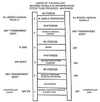Francis Bacon – The Man Behind the Curtain Part 2
Freemasonry in The Tempest
Now, as the world is a globe, or, to speak more accurately, an oblate spheroid, the attempt to make an oblong square its symbol would seem, at first view, to present insuperable difficulties. But the system of Masonic symbolism has stood the test of too long an experience to be easily found at fault; and therefore this very symbol furnishes a striking evidence of the antiquity of the order. At the Solomonic era - the era of the building of the temple at Jerusalem - the world, it must be remembered, was supposed to have that very oblong form, which has been here symbolized. If, for example, on a map of the world we should inscribe an oblong figure whose boundary lines would circumscribe and include just that portion which was known to be inhabited in the days of Solomon, these lines, running a short distance north and south of the Mediterranean Sea, and extending from Spain in the west to Asia Minor in the east, would form an oblong square, including the southern shore of Europe, the Northern shore of Africa, and the western district of Asia, the length of the parallelogram being about sixty degrees from east to west, and its breath being about twenty degrees from north to south. This oblong square, thus enclosing the whole of what was then supposed to be the habitable globe, would precisely represent what is symbolically said to be the form of the lodge, while the Pillars of Hercules in the west, on each side of the straits of Gades or Gibraltar, might appropriately be referred to the two pillars that stood at the porch of the temple [MJF: i.e., Boaz and Joachin – see image below]. A Masonic lodge is, therefore a symbol of the world.

This symbol is sometimes, by a very usual figure of speech, extended, in its application, and the world and the universe are made synonymous, when the lodge becomes, of course, a symbol of the universe.
So, we have the action taking place in a Masonic Lodge, complete with the two pillars at the entrance. Is this far-fetched? Let's go a step further. The floor of a Masonic Lodge is composed of black and white squares like those on a chessboard. In my essay "Bacon-101-6", I demonstrated the symbolization of The Tempest is that of a chess game, built on the scenario of Ferdinand and Miranda playing a game of chess, and that realization of this symbolism brings the realization that all of the action takes place on the black and white squares of the chessboard. Thus, the floor where the action takes place, is made up of black and white squares. Therefore, we add to the symbolic setting in the Masonic Lodge, the chessboard - black and white square design - for the floor of the setting. This is exactly the floor of the Masonic Lodge. So, we not only have the Masonic Lodge; we not only have the twin pillars at the entrance; we also have the chessboard floor of the Masonic Lodge (see image below).
View attachment 110482
In "Secrets of the Shakespeare Plays" I described the fact that, among other features, the characters in The Tempest are modelled on the signs of the zodiac. While searching the web I came across a page with an interesting graphic from a work by a Spanish Jesuit who lived at the time of Bacon. His name was Juan Bautista Villalpando. He was obsessed with the idea of reconstructing The Temple of Solomon. In his depiction of Solomon's Temple, he showed the astrological symbols of the zodiac arranged around the outline of The Temple of Solomon just as Simon had the astrological signs of the zodiac arranged around the outline of the chessboard on his chessboard of Europe. Was all of this coincidence? If this was the only Masonic symbolism in the play, coincidence might be a possibility (although very unlikely), but this is not all by far. Detail is piled upon detail.
Rather than lay out all of Walker’s proofs for the Masonic symbolism replete in Shakespeare’s (Bacon’s) works, I shall leave those who are interested in the subject to read his article, which can be found at the following link: mcompeer.htm (sirbacon.org). We should note here that there are clearly hidden codes or cyphers in Shakespeare’s works that suggest Shakespeare was a master cryptographer - meaning someone who creates, analyses and solves codes. The creation and use of codes or cyphers is usually the preserve of those involved with spying and espionage. There is nothing to indicate that William Shakespeare of Stratford-upon-Avon was ever involved with spying. However, it is well known that Francis Bacon was for he was despatched as a young man in his twenties to the Continent on diplomatic service (which even today is still a cover for spying) for the English Crown when he accompanied the new English ambassador to France. Indeed, he would eventually become head of the English Secret Service in 17th century. Moreover, it is known that he studied cryptography under the tutelage of master cryptographer Dr John Dee, when Dee instructed a young Francis Bacon at his house in Mortlake south London in the secrets of the Hebrew Atbash Cypher.
Walker relies heavily upon Alfred Dodd’s work "Shakespeare : Creator of Freemasonry" to prove his case where, as he states, Dodd itemises an almost unbelievable number of Masonic allusions in the Shakespeare plays, especially in "Love's Labour Lost". Indeed, many Baconians believe the clown parodied in Love's Labour Lost was in fact William Shakespeare of Stratford-upon-Avon. Quoting Walker:
I would just add as a further aside here that although Freemasons incorporate the twin pillars Boaz and Joachin that reputedly stood in front of the Temple of Solomon both in their lodge architecture and in their iconography, the C’s have said that the Craft’s roots lie not in Judaism but with the Osirians of ancient Egypt who were active over 7,500 years ago and practiced Freemasonry at what today is the 33rd degree. Moreover, the C’s have also confirmed that there never was a magnificent Temple of Solomon in Jerusalem and that the biblical Jewish King Solomon was in fact based on King Narmer (or Menes) who is generally recognised as being the first pharaoh of a united Upper and Lower Egypt, reigning around 3,500 BC:
and the upper echelons of Freemasonry are in fact the Illuminati:
The C’s commented on the supernova in Cassiopeia in the following sessions:
And
Freemasonry in The Tempest
It is not surprising that The Tempest has so many Masonic allusions - symbolically the setting is inside a Masonic Lodge. To understand this, it is necessary to have a mental picture of the setting of the drama. It takes place in the Mediterranean Sea. What does the Mediterranean Sea have to do with a Masonic Lodge? Read the testimony of Albert Mackey, one of the foremost Masonic scholars. In his "Symbolism of Freemasonry" Mackey has a very interesting passage:
"The form of a Masonic lodge is said to be a parallelogram, or oblong square; its greatest length being from east to west, its breath from north to south. A square, a circle, a triangle, or any other form but that of an oblong square, would be eminently incorrect and unmasonic, because such a figure would not be an expression of the symbolic idea which is intended to be conveyed.”
Now, as the world is a globe, or, to speak more accurately, an oblate spheroid, the attempt to make an oblong square its symbol would seem, at first view, to present insuperable difficulties. But the system of Masonic symbolism has stood the test of too long an experience to be easily found at fault; and therefore this very symbol furnishes a striking evidence of the antiquity of the order. At the Solomonic era - the era of the building of the temple at Jerusalem - the world, it must be remembered, was supposed to have that very oblong form, which has been here symbolized. If, for example, on a map of the world we should inscribe an oblong figure whose boundary lines would circumscribe and include just that portion which was known to be inhabited in the days of Solomon, these lines, running a short distance north and south of the Mediterranean Sea, and extending from Spain in the west to Asia Minor in the east, would form an oblong square, including the southern shore of Europe, the Northern shore of Africa, and the western district of Asia, the length of the parallelogram being about sixty degrees from east to west, and its breath being about twenty degrees from north to south. This oblong square, thus enclosing the whole of what was then supposed to be the habitable globe, would precisely represent what is symbolically said to be the form of the lodge, while the Pillars of Hercules in the west, on each side of the straits of Gades or Gibraltar, might appropriately be referred to the two pillars that stood at the porch of the temple [MJF: i.e., Boaz and Joachin – see image below]. A Masonic lodge is, therefore a symbol of the world.
This symbol is sometimes, by a very usual figure of speech, extended, in its application, and the world and the universe are made synonymous, when the lodge becomes, of course, a symbol of the universe.
So, we have the action taking place in a Masonic Lodge, complete with the two pillars at the entrance. Is this far-fetched? Let's go a step further. The floor of a Masonic Lodge is composed of black and white squares like those on a chessboard. In my essay "Bacon-101-6", I demonstrated the symbolization of The Tempest is that of a chess game, built on the scenario of Ferdinand and Miranda playing a game of chess, and that realization of this symbolism brings the realization that all of the action takes place on the black and white squares of the chessboard. Thus, the floor where the action takes place, is made up of black and white squares. Therefore, we add to the symbolic setting in the Masonic Lodge, the chessboard - black and white square design - for the floor of the setting. This is exactly the floor of the Masonic Lodge. So, we not only have the Masonic Lodge; we not only have the twin pillars at the entrance; we also have the chessboard floor of the Masonic Lodge (see image below).
View attachment 110482
In "Secrets of the Shakespeare Plays" I described the fact that, among other features, the characters in The Tempest are modelled on the signs of the zodiac. While searching the web I came across a page with an interesting graphic from a work by a Spanish Jesuit who lived at the time of Bacon. His name was Juan Bautista Villalpando. He was obsessed with the idea of reconstructing The Temple of Solomon. In his depiction of Solomon's Temple, he showed the astrological symbols of the zodiac arranged around the outline of The Temple of Solomon just as Simon had the astrological signs of the zodiac arranged around the outline of the chessboard on his chessboard of Europe. Was all of this coincidence? If this was the only Masonic symbolism in the play, coincidence might be a possibility (although very unlikely), but this is not all by far. Detail is piled upon detail.
Rather than lay out all of Walker’s proofs for the Masonic symbolism replete in Shakespeare’s (Bacon’s) works, I shall leave those who are interested in the subject to read his article, which can be found at the following link: mcompeer.htm (sirbacon.org). We should note here that there are clearly hidden codes or cyphers in Shakespeare’s works that suggest Shakespeare was a master cryptographer - meaning someone who creates, analyses and solves codes. The creation and use of codes or cyphers is usually the preserve of those involved with spying and espionage. There is nothing to indicate that William Shakespeare of Stratford-upon-Avon was ever involved with spying. However, it is well known that Francis Bacon was for he was despatched as a young man in his twenties to the Continent on diplomatic service (which even today is still a cover for spying) for the English Crown when he accompanied the new English ambassador to France. Indeed, he would eventually become head of the English Secret Service in 17th century. Moreover, it is known that he studied cryptography under the tutelage of master cryptographer Dr John Dee, when Dee instructed a young Francis Bacon at his house in Mortlake south London in the secrets of the Hebrew Atbash Cypher.
Walker relies heavily upon Alfred Dodd’s work "Shakespeare : Creator of Freemasonry" to prove his case where, as he states, Dodd itemises an almost unbelievable number of Masonic allusions in the Shakespeare plays, especially in "Love's Labour Lost". Indeed, many Baconians believe the clown parodied in Love's Labour Lost was in fact William Shakespeare of Stratford-upon-Avon. Quoting Walker:
“As Dodd says, the body of evidence cited in his book "proves incontestably these works were saturated in Masonry." The problem is, and has always been, dual. In the first place, scholars do not realise that Bacon wrote the plays. And in the second place, in addition to this lamentable ignorance, the scholars who have studied the plays have had no familiarity with Freemasonry. When they encounter something, such as the knocking at the gate scene with the porter in Macbeth, it registers no more than light on the eyes of a blind man. But the repeated three knocks at the door, especially in connection with the association of King James I with Scottish Freemasonry, almost certainly alludes to the ritual of Freemasonry.”
I would just add as a further aside here that although Freemasons incorporate the twin pillars Boaz and Joachin that reputedly stood in front of the Temple of Solomon both in their lodge architecture and in their iconography, the C’s have said that the Craft’s roots lie not in Judaism but with the Osirians of ancient Egypt who were active over 7,500 years ago and practiced Freemasonry at what today is the 33rd degree. Moreover, the C’s have also confirmed that there never was a magnificent Temple of Solomon in Jerusalem and that the biblical Jewish King Solomon was in fact based on King Narmer (or Menes) who is generally recognised as being the first pharaoh of a united Upper and Lower Egypt, reigning around 3,500 BC:
Q: Was Solomon a King of Egypt? A: Yes. Q: Which king of Egypt was the equivalent of Solomon?
A: Narmer.
This suggests to me that if the twin pillars Boaz and Joachin are based on something real and tangible, they most likely would have formed part of an Egyptian temple or similar structure, possibly the Sphinx, which supposedly has a hidden temple concealed within its head. If so, it suggests that the roots of Freemasonry lie in Egypt just as the C’s have said.
What Walker and Dodd convincingly show though is that whoever wrote the plays of William Shakespeare had a deep and ingrained knowledge of Freemasonry, a knowledge that would almost certainly have required you to have been an active member of the lodge.
We have looked at length at Bacon’s links to Freemasonry but what about his hidden links to Rosicrucianism?
Francis Bacon and his Links to the RosicruciansWhat Walker and Dodd convincingly show though is that whoever wrote the plays of William Shakespeare had a deep and ingrained knowledge of Freemasonry, a knowledge that would almost certainly have required you to have been an active member of the lodge.
We have looked at length at Bacon’s links to Freemasonry but what about his hidden links to Rosicrucianism?
Mrs Henry Pott expresses the view that the Rosicrucians were really Francis Bacon’s secret society and that the Brethren of the Rosy Cross did not have the ancient provenance claimed for it in the Rosicrucian Manifestos, particularly the Fama. She also believed that the Rosicrucians were the upper ranks of Freemasonry. However, the C’s have refuted both claims by indicating that the Rosicrucians origins lay with the mysterious Rosteem who were originally based at Giza (Rostau) in Egypt:
Q: (L) Well, that is not good! Are you saying that the Elohim are STS? Who were these STS beings they made a pact with?
A: Rosteem, now manifests as Rosicrucians;
and the upper echelons of Freemasonry are in fact the Illuminati:
Q: (L) How do the Masons relate to the Illuminati?
A: Masons are low level branch.
So, unless the Rosicrucians and the Illuminati are one and the same body of men, Mrs Pott cannot be right. That does not mean to say that there is no overlap between the two organisations since some Rosicrucians may be high ranking Freemasons as well (‘circles within circles’). However, one major point of distinction that she draws between the two organisations is that the 17th century Rosicrucians had a decidedly pro-Christian bias whereas Freemasonry was more equivocal where Christianity was concerned, referring to God as the ‘Great Architect of the Universe’ rather than the Christian Trinity. If Francis Bacon was the Grand Master of the early 17th century Rosicrucians, then he undoubtedly wished to promote the Christian basis underlying the Rosicrucian movement. Perhaps this is reflected in what the C’s said here:
Q: In reading the transcripts, I came across a reference to a 'pact' made by a group of STS individuals, and it was called 'Osirians,' and that this was the origin of the Rosicrucians. In the book 'The Orion Mystery,' it talks about the fact that Giza was formerly known as RosTau, which is 'Rose Cross.' Essentially, I would like to understand the symbology of the Rose affixed to the Cross. It seems to me that the imagery of Jesus nailed to the Cross is actually the Rose affixed to the Cross. How does Jesus relate to the Rose?
A: No, it is from the Rose arose the Cross.
Mrs Pott makes the case that Francis Bacon became the head of the Rosicrucians at the tender age of 15 when he commenced his Great Instauration program. He initiated this program soon after he had come down from Cambridge University after discovering, to his great chagrin, that the university educational system of the day left a lot to be desired and had failed to engage his highly developed intellect. As Mrs Henry Potts states: “at the age of fifteen, Francis Bacon had run through the whole round of the arts and sciences at Cambridge, had outstripped his tutors, and had left Cambridge in disappointment and disgust, finding nothing more to learn there.” Indeed, he was so disgusted that he left without a degree. It was this perceived deficiency in learning and the failure of contemporary teaching methods that motivated him to commence the Great Instauration for the benefit of all mankind.
Mrs Pott tells us that the manner in which he spent the next year after coming down from Cambridge is not recorded but she proposes that some light on the matter may be gleaned from the Rosicrucian Manifesto known by its short title the Fama Fraternitas. The Fama tells us that “the high and noble spirit of one of the Fraternity was stirred up to enter into schemes for a general reformation, and to travel away to the wise men of Arabia.” For Mrs Pott this suggests that the young philosopher was entering into his studies of Rhazis, Avenzoar, Averroes, Avicenna, and other Arabic physicians and “Hermetic” writers whom he would later quote in both his acknowledged and unacknowledged writings. Further, the Fama informs us that at this time this young member of the fraternity was sixteen years old and for a period of one year he had pursued his course alone. But it was not only the Arabian philosophers that he studied, for Bacon would also study the occult philosophies of India, Persia and Egypt from which he would draw the universal symbols and emblems which would become the language and hieroglyphics of Freemasonry (and no doubt Rosicrucianism too).
Although the undertaking of such a grand project for one so young may suggest a precociousness on the teenage Bacon’s part, in many ways he was much older than his years and was a classic example of a wise head on young shoulders. However, you should note that he commenced this project in the year 1575. This was only three years after a spectacular supernova in the constellation of Cassiopeia had appeared dramatically in the sky in 1572. Although all the great astronomers of Europe (including Bacon’s mentor Dr John Dee*) were enthralled by this celestial spectacle, which would last for almost two years, there were those who also saw it as an auspicious omen, one that would galvanise them into action. Who were these people? They were none other than the brethren of the Rosy Cross, who had remained hidden out of sight awaiting the right moment to emerge on the scene. According to Royal Society member and scientist Robert Fludd (see more below), the “new star” of 1572 marked the beginning of the Rosicrucian work. Although Fludd disavowed any connection with the Rosicrucians, he, like Michael Maier, is generally recognized as one of the chief exponents of their philosophy.
*As was John Dee’s friend and former prison cell mate, John Field, one of 16th century Britain’s leading astronomers, who lived in Wharfdale in Yorkshire near to the ridge known as the Chevin, which runs all the way to Doncaster (Dancar). I strongly suspect he may have been one of the Philosophers of Dancar referred to in the Rosiccrucian Manifesto known as the Fama (see more below on this). Another member may have been the English mathematician and astronomer Thomas Digges who, after the death of his father, grew up under the guardianship of John Dee. Digges attempted to determine the parallax of the 1572 supernova observed by Tycho Brahe, and concluded it had to be beyond the orbit of the Moon. This contradicted Aristotle's view of the universe, according to which no change could take place among the fixed stars.
Mrs Pott tells us that the manner in which he spent the next year after coming down from Cambridge is not recorded but she proposes that some light on the matter may be gleaned from the Rosicrucian Manifesto known by its short title the Fama Fraternitas. The Fama tells us that “the high and noble spirit of one of the Fraternity was stirred up to enter into schemes for a general reformation, and to travel away to the wise men of Arabia.” For Mrs Pott this suggests that the young philosopher was entering into his studies of Rhazis, Avenzoar, Averroes, Avicenna, and other Arabic physicians and “Hermetic” writers whom he would later quote in both his acknowledged and unacknowledged writings. Further, the Fama informs us that at this time this young member of the fraternity was sixteen years old and for a period of one year he had pursued his course alone. But it was not only the Arabian philosophers that he studied, for Bacon would also study the occult philosophies of India, Persia and Egypt from which he would draw the universal symbols and emblems which would become the language and hieroglyphics of Freemasonry (and no doubt Rosicrucianism too).
Although the undertaking of such a grand project for one so young may suggest a precociousness on the teenage Bacon’s part, in many ways he was much older than his years and was a classic example of a wise head on young shoulders. However, you should note that he commenced this project in the year 1575. This was only three years after a spectacular supernova in the constellation of Cassiopeia had appeared dramatically in the sky in 1572. Although all the great astronomers of Europe (including Bacon’s mentor Dr John Dee*) were enthralled by this celestial spectacle, which would last for almost two years, there were those who also saw it as an auspicious omen, one that would galvanise them into action. Who were these people? They were none other than the brethren of the Rosy Cross, who had remained hidden out of sight awaiting the right moment to emerge on the scene. According to Royal Society member and scientist Robert Fludd (see more below), the “new star” of 1572 marked the beginning of the Rosicrucian work. Although Fludd disavowed any connection with the Rosicrucians, he, like Michael Maier, is generally recognized as one of the chief exponents of their philosophy.
*As was John Dee’s friend and former prison cell mate, John Field, one of 16th century Britain’s leading astronomers, who lived in Wharfdale in Yorkshire near to the ridge known as the Chevin, which runs all the way to Doncaster (Dancar). I strongly suspect he may have been one of the Philosophers of Dancar referred to in the Rosiccrucian Manifesto known as the Fama (see more below on this). Another member may have been the English mathematician and astronomer Thomas Digges who, after the death of his father, grew up under the guardianship of John Dee. Digges attempted to determine the parallax of the 1572 supernova observed by Tycho Brahe, and concluded it had to be beyond the orbit of the Moon. This contradicted Aristotle's view of the universe, according to which no change could take place among the fixed stars.
The C’s commented on the supernova in Cassiopeia in the following sessions:
Session 7 June 1997:
Q: Supposedly, Christian Rosencruetz was initiated by the 'philosophers of Dancar.' I want to know where this blasted place is! Okay, skip it. One of the Rosicrucian manifestos said: 'God has sent messengers and signs in the heavens, namely the new stars in Serpentarius and Cygnus, to show that a great council of the elect is to take place.' What do they mean by a 'great council of the elect?'
A: Pyrenees.
Q: Okay, the purported enclave of the alchemists... Why was it signified by new stars in Serpentarius and Cygnus? What do they represent?
A: Novae.
And
Session 5 September 1998:
Q: (L) We noticed that the supernova that occurred in Cassiopaea 300 years ago did not seem to have been widely noticed by people on earth. What is the reason for this?
A: Distance.
Q: (L) Now, formerly I asked about the ‘two new stars in Cygnus and Serpentarius’ that were written about in the Rosicrucian Manifesto of about this period of time, and you said they were talking about ‘novae.’ But, it seems that there are no new stars in either of these constellations. Yet, at approximately this time, was the supernova in Cassiopaea.
A: Yes, those with foreknowledge were looking.
So, were the Roscirucians the people with the foreknowledge the C’s spoke of who were looking out for these novae? According to Francis Bacon researcher Peter Dawkins, the answer is a definite yes.
In Dawkins article ‘The Mystery of Oak Island’ he states:
“To project heaven on earth and know what you were navigating to, and what area of the world corresponds to in terms of symbolism (I will return to the subject of symbolism below) associated with the stars, was of key import. And this is where Oak Island and Nova Scotia show up in their importance, as well as helping to explain why Queen Elizabeth I was likened to the Virgin Queen, who in the sky is represented by the constellation of Cassiopeia, the Enthroned Queen (equivalent to Isis, the Egyptian goddess-queen).
A supernova in Cassiopeia appeared dramatically in the sky from 1572 to 1574 and was taken [by the Rosicrucians] as a sign of the birth of a child to the Virgin Queen, or the appearance of a great light in that part of the world representing the Virgin Queen, Cassiopeia. At that time, the part of the world corresponding to Cassiopeia was the British Isles – England in particular – and an earthly queen always equates in tradition as personifying the land.
The Rosicrucian apologist Michael Maier is alleged to have stated, in a manuscript residing at the University of Leiden (Leipzig), that the Society or Fraternity of the Golden and Rosy Cross had been founded circa 1570 by members of a group whose origins lay in a ‘community founded in 1510 in London by Heinrich Cornelius Agrippa von Nettesheim. The alleged manuscript is now lost (if, indeed, it ever existed) but in support of what it is purported to have said is the fact that Robert Fludd wrote, in his Tractis Apoligetica (1617):
In Dawkins article ‘The Mystery of Oak Island’ he states:
“To project heaven on earth and know what you were navigating to, and what area of the world corresponds to in terms of symbolism (I will return to the subject of symbolism below) associated with the stars, was of key import. And this is where Oak Island and Nova Scotia show up in their importance, as well as helping to explain why Queen Elizabeth I was likened to the Virgin Queen, who in the sky is represented by the constellation of Cassiopeia, the Enthroned Queen (equivalent to Isis, the Egyptian goddess-queen).
A supernova in Cassiopeia appeared dramatically in the sky from 1572 to 1574 and was taken [by the Rosicrucians] as a sign of the birth of a child to the Virgin Queen, or the appearance of a great light in that part of the world representing the Virgin Queen, Cassiopeia. At that time, the part of the world corresponding to Cassiopeia was the British Isles – England in particular – and an earthly queen always equates in tradition as personifying the land.
The Rosicrucian apologist Michael Maier is alleged to have stated, in a manuscript residing at the University of Leiden (Leipzig), that the Society or Fraternity of the Golden and Rosy Cross had been founded circa 1570 by members of a group whose origins lay in a ‘community founded in 1510 in London by Heinrich Cornelius Agrippa von Nettesheim. The alleged manuscript is now lost (if, indeed, it ever existed) but in support of what it is purported to have said is the fact that Robert Fludd wrote, in his Tractis Apoligetica (1617):
“that the “new star” of 1572 marked the beginning of the Rosicrucian work, which then continued to be prepared in secret until the 1603-04 planetary conjunctions and appearance of the new stars in Cygnus and Ophiuchus [Serpentario], which was a sign to the Fraternity for them to emerge from their period of secrecy, expand their membership and begin the restoration of the world.”
I would add that the supernova in Cassiopeia was an event that the young Francis Bacon attached great importance to as he saw it as an augury or good omen for his future. But what was it about the novae in Cygnus and Serpentarius that had Bacon and his fellow Rosicrucians suddenly rushing around publishing the Rosicrucian Manifestos and visiting Oak Island? Well, the answer is what novae represent. In Latin “novae” is the plural of the feminine form of “novus” meaning “new” in English. Supernovae, as we know, are caused by the explosion of old stars. However, the death of one star may lead to the birth of new stars with their attendant planets - see Star formation - Wikipedia. It is in effect the Phoenix effect with a new bird (star) arising out of the ashes of the old bird (star).
So, what bird did the Rosicrucians want to resurrect? The answer, I think, is Atlantis or Arcadia. Bacon made it clear in his last great work, The New Atlantis, that he wished to see a resurrection of the Golden Age through the creation of a New Atlantis and North America would be its base. This would be a new Arcadia, a ‘Land of the Rosicrucians’. As Dawkins states:
So, what bird did the Rosicrucians want to resurrect? The answer, I think, is Atlantis or Arcadia. Bacon made it clear in his last great work, The New Atlantis, that he wished to see a resurrection of the Golden Age through the creation of a New Atlantis and North America would be its base. This would be a new Arcadia, a ‘Land of the Rosicrucians’. As Dawkins states:
“In Baconian terms, this ‘virginal’ Arcadian land is the earthly part of what could be the beginning of the New Atlantis – the old Atlantis of North America ‘instaurated’ into a new shining ‘golden’ form, blessing itself and the world with a new Golden Age. A New Golden Age to rival the earlier Golden Age of Atlantis.”
Continued in Part 3
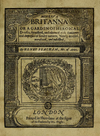
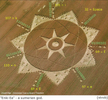
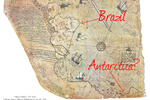
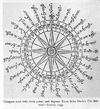
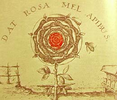
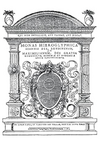
 .
.